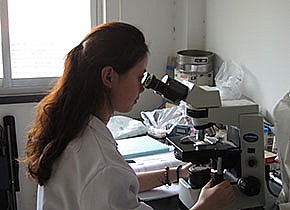Media releases
Platypus venom could hold key to diabetes treatment
Posted: Thursday 1 December 2016
Research from Federation University Australia has played an important role in a possible new treatment for type two diabetes
The findings reveal that evolutionary changes to insulin regulation in two of the nation's most iconic native animal species – the platypus and the echidna – could pave the way for new diabetes treatments.
The findings, now published in the Nature journal Scientific Reports reveal that the same hormone produced in the gut of the platypus to regulate blood glucose is also surprisingly produced in their venom.
The research team included Associate Professor Mark Myers at Federation University Australia, Professor Frank Grützner at the University of Adelaide, Associate Professor Briony Forbes at Flinders University as well as researchers from Monash and Melbourne Universities.
The hormone, known as glucagon-like peptide-1 (GLP-1), is normally secreted in the gut of both humans and animals, stimulating the release of insulin to lower blood glucose. But GLP-1 typically degrades within minutes.
In people with type two diabetes, the short stimulus triggered by GLP-1 isn't sufficient to maintain a proper blood sugar balance.
As a result, medication that includes a longer lasting form of the hormone is needed to help provide an extended release of insulin.
"Our research team has discovered that monotremes – our iconic platypus and echidna – have evolved changes in the hormone GLP-1 that make it resistant to the rapid degradation normally seen in humans," co-lead author Professor Frank Grützner, from the University of Adelaide's School of Biological Sciences and the Robinson Research Institute, said.
"We've found that GLP-1 is degraded in monotremes by a completely different mechanism. Further analysis of the genetics of monotremes reveals that there seems to be a kind of molecular warfare going on between the function of GLP-1, which is produced in the gut but surprisingly also in their venom.”
Associate Professor Mark Myers said: "This is an amazing example of how millions of years of evolution can shape molecules and optimise their function. GLP-1 is an important hormone in glucose control so these findings have the potential to inform diabetes treatment, one of our greatest health challenges."
The platypus produces a powerful venom during breeding season, which is used in the competition among males for females.
“We've discovered conflicting functions of GLP-1 in the platypus: in the gut as a regulator of blood glucose, and in venom to fend off other platypus males during breeding season. This tug of war between the different functions has resulted in dramatic changes in the GLP-1 system," co-lead author Associate Professor Briony Forbes, from Flinders University's School of Medicine, said.
"The function in venom has most likely triggered the evolution of a stable form of GLP-1 in monotremes. Excitingly, stable GLP-1 molecules are highly desirable as potential type 2 diabetes treatments.”
| Contact | Matthew Freeman Senior Advisor, Media and Government Relations 03 5327 9510; 0408 519 674 m.freeman@federation.edu.au |
|---|